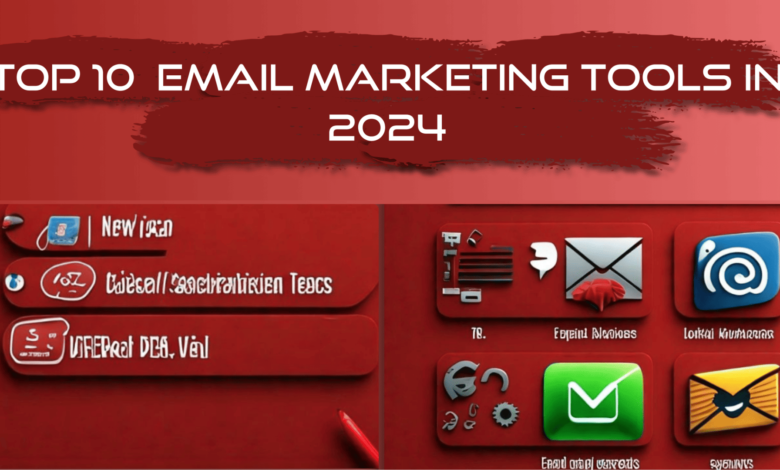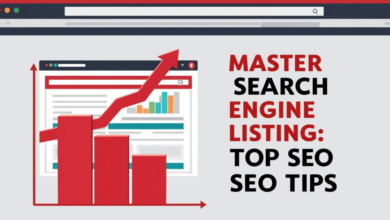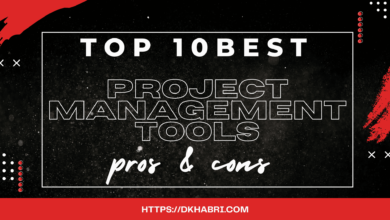
In the ever-evolving landscape of digital marketing, email remains one of the most effective channels for reaching and engaging customers. With a plethora of email marketing tools available, selecting the right one can significantly impact your campaign success. Here’s a curated list of the Top 10 Best Email Marketing Tools of 2024, along with their standout features, pros, and cons.
What is Email Marketing?
Email marketing is a digital marketing strategy that involves sending emails to a list of contacts to promote products, share news, or build customer relationships. It allows businesses to communicate directly with their audience, driving engagement and conversions. Effective email marketing involves crafting compelling messages, segmenting audiences, and analyzing campaign performance.
Why Choosing the Right Email Marketing Tool is Important
Selecting the right email marketing tool is crucial for maximizing the effectiveness of your campaigns. A suitable tool enables better audience segmentation, automation of tasks, and performance tracking. It can enhance the overall user experience, improve deliverability rates, and ultimately lead to higher engagement and conversion rates. With the right tool, businesses can streamline their email marketing efforts and achieve better results.
Factors to Consider When Choosing the Best Email Marketing Tool
When evaluating email marketing tools, consider the following factors:
-
Ease of Use:
Look for intuitive interfaces that minimize the learning curve for your team.
-
Automation Features:
Automation capabilities can save time and improve campaign effectiveness by sending timely messages based on user behavior.
-
Templates and Design Options:
A variety of customizable templates can help create visually appealing emails that resonate with your audience.
-
Analytics and Reporting:
Robust analytics tools allow you to track open rates, click-through rates, and conversions, providing insights for future campaigns.
-
Integration Capabilities:
Ensure the tool integrates with your existing systems, such as CRM or e-commerce platforms, for seamless data flow.
-
Pricing:
Consider your budget and evaluate the pricing models, including monthly fees and potential costs for additional features.
Check more: Marketing Email Footer Terms Explained for Better Results
Top 10 Best Email Marketing Tools of 2024
After extensive research, we’ve identified the top, we have identified Top 10 Best Email Marketing Tools of 2024.

- Mailchimp
Advantages:
- User-Friendly Interface: Great for beginners with its drag-and-drop editor.
- Automation Features: Offers robust automation workflows for targeted campaigns.
- Comprehensive Analytics: Detailed reporting tools to measure campaign performance.
Disadvantages:
- Costly for Larger Lists: Pricing can escalate as your subscriber list grows.
- Limited Customization: Some users find design options restrictive.
-
Constant Contact
Advantages:
- Easy Setup: Quick to get started with user-friendly tools.
- Event Marketing Features: Unique features for managing events and registrations.
- Excellent Customer Support: Strong support options including live chat.
Cons:
- Limited Automation Options: Automation features are not as advanced as some competitors.
- Pricing: Can be on the higher side for small businesses.
-
Sendinblue
Disadvantages:
- Affordable Pricing: Offers a generous free plan and competitive pricing.
- Multi-Channel Marketing: Combines email marketing with SMS marketing options.
- Automation Capabilities: Effective automation tools for user segmentation.
Cons:
- Limited Templates: Fewer email templates compared to some competitors.
- Deliverability Issues: Some users report inconsistencies with deliverability rates.
-
GetResponse
Advantages:
- Comprehensive Features: Offers landing page creation and webinar tools.
- Advanced Analytics: In-depth reporting features to track performance.
- Automation Features: Smart automation for customer engagement.
Disadvantages:
- Learning Curve: Some users find the interface overwhelming initially.
- Cost for Premium Features: Advanced features may come at a premium price.
-
AWeber
Advantages:
- Strong Automation: Excellent automation features for autoresponders.
- Easy-to-Use Editor: Intuitive email builder for quick design.
- Integrations: Supports various integrations with other tools.
Disadvantages:
- Limited Design Options: Fewer customizable templates than competitors.
- Pricing Structure: Monthly fees can be steep for larger lists.
-
HubSpot
Advantages:
- All-in-One Marketing Hub: Integrates email marketing with CRM and other tools.
- Advanced Analytics: Powerful reporting features for campaign analysis.
- Customization Options: Highly customizable email templates.
Disadvantages:
- Costly for Small Businesses: Can be expensive, especially for larger teams.
- Complexity: The extensive features may be overwhelming for beginners.
-
Campaign Monitor
Advantages:
- Beautiful Email Templates: Offers a wide range of visually appealing templates.
- Personalization Features: Advanced personalization options for targeted campaigns.
- User-Friendly Interface: Easy to navigate and use.
Disadvantages:
- Limited Free Plan: The free tier lacks many essential features.
- Pricing for Large Lists: Costs can increase significantly with larger subscriber lists.
-
ConvertKit
Advantages:
- Designed for Creators: Excellent for bloggers and content creators.
- Simple Automation: User-friendly automation for audience engagement.
- Landing Pages: Offers built-in landing page functionality.
Disadvantages:
- Limited Design Flexibility: Fewer design options compared to other tools.
- Higher Pricing: Costs can be high for advanced features.
- ActiveCampaign
Advantages:
- Advanced Automation: Powerful automation features for sophisticated campaigns.
- CRM Integration: Seamless integration with CRM systems for tracking leads.
- In-Depth Analytics: Comprehensive reporting tools to measure effectiveness.
Disadvantages:
- Complex Interface: May have a steep learning curve for new users.
- Pricing Structure: Can be expensive compared to simpler tools.
-
MailerLite
Advantages:
- Affordable Plans: Competitive pricing, including a free tier.
- User-Friendly Interface: Intuitive design makes it easy to use.
- Automation Features: Offers effective automation capabilities for engagement.
Disadvantages:
- Limited Templates: Fewer templates compared to some leading competitors.
- Basic Reporting: Reporting features may lack depth for advanced users.

Frequently Asked Questions (FAQs)
Here are FAQs regarding Top 10 Best Email Marketing Tools of 2024.
-
What is email marketing?
Email marketing is a digital marketing strategy that involves sending emails to promote products, share updates, or engage with customers. It helps businesses build relationships and drive conversions.
-
Why is email marketing important?
Email marketing is important because it provides a direct line of communication with your audience, allowing for personalized engagement, increased brand awareness, and higher conversion rates.
-
How do I choose the best email marketing tool for my business?
Consider factors such as your specific needs, budget, ease of use, automation features, analytics capabilities, and integration with other tools. Evaluate each tool against these criteria to find the best fit.
-
Are there free email marketing tools available?
Yes, many email marketing tools offer free plans with basic features. Tools like Mailchimp and Sendinblue provide free tiers suitable for small businesses and startups.
-
Can I automate my email campaigns?
Yes, most email marketing tools offer automation features that allow you to schedule emails, create autoresponders, and set up triggered campaigns based on user behavior.
-
How can I improve my email open rates?
To improve open rates, focus on crafting compelling subject lines, segmenting your audience for targeted messaging, and optimizing send times based on when your audience is most active.
-
What metrics should I track in my email campaigns?
Key metrics to track include open rates, click-through rates (CTR), conversion rates, unsubscribe rates, and overall engagement levels. These metrics provide insights into campaign performance.
-
What should I do if my emails are not getting delivered?
If your emails are not getting delivered, check your sender reputation, ensure your email list is clean, and avoid spammy content. You may also want to monitor your domain’s authentication settings.



